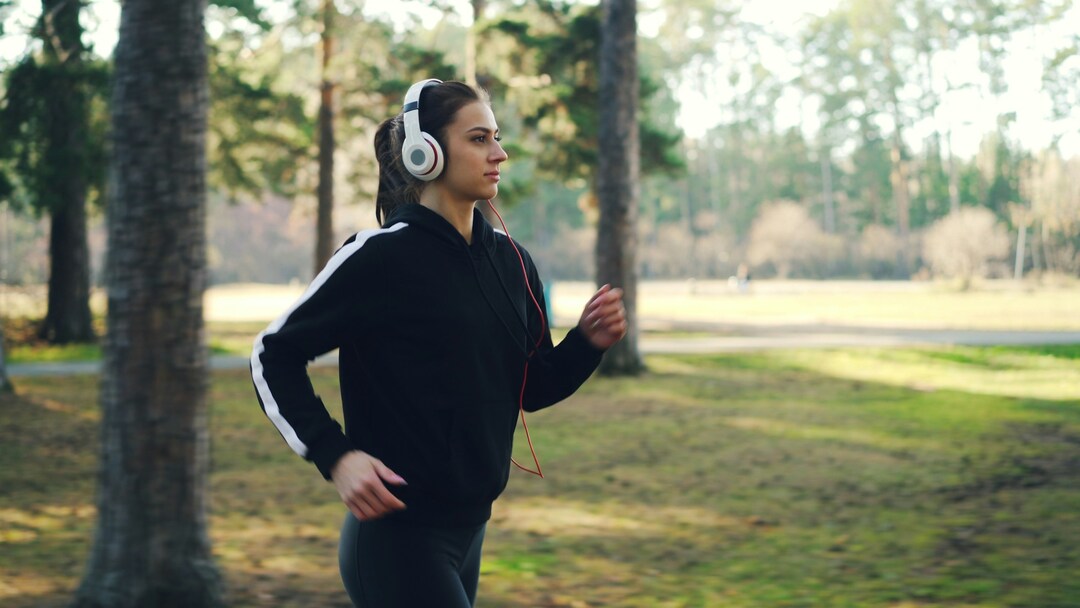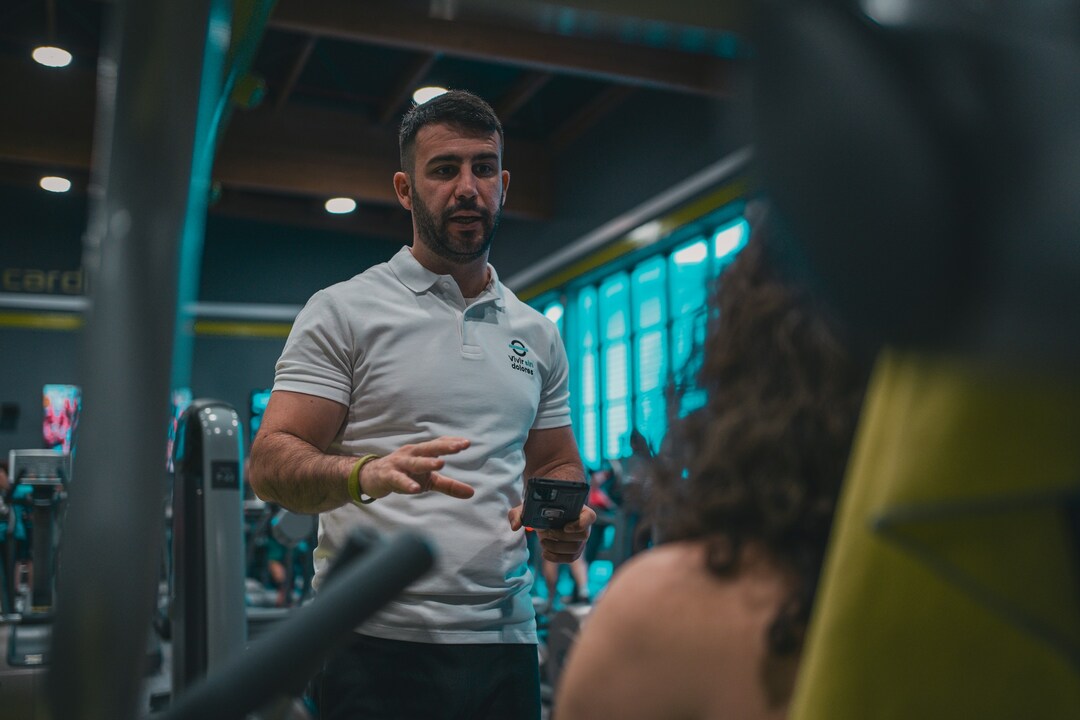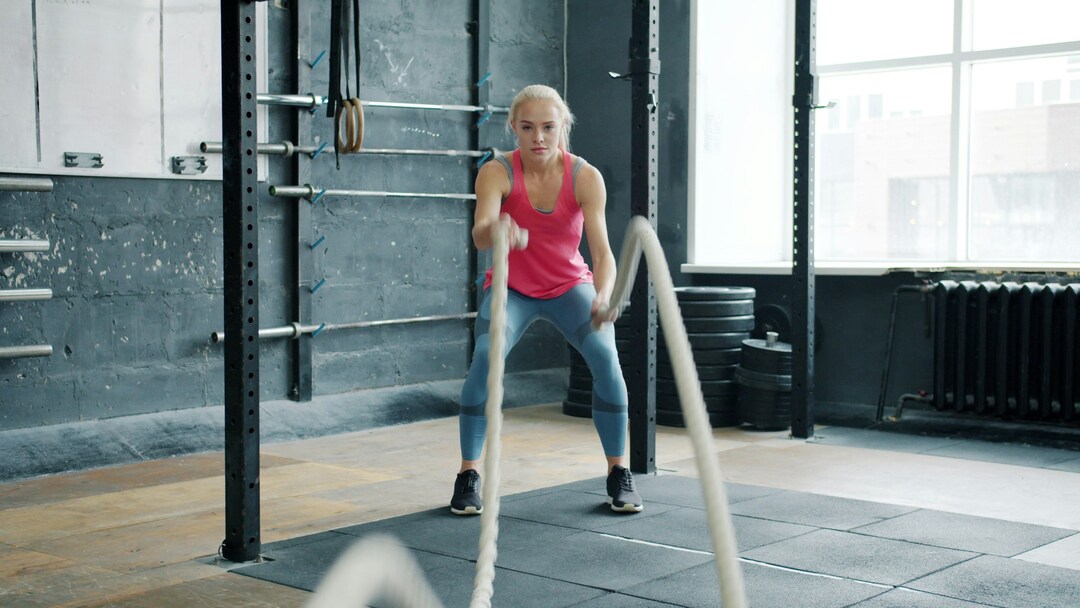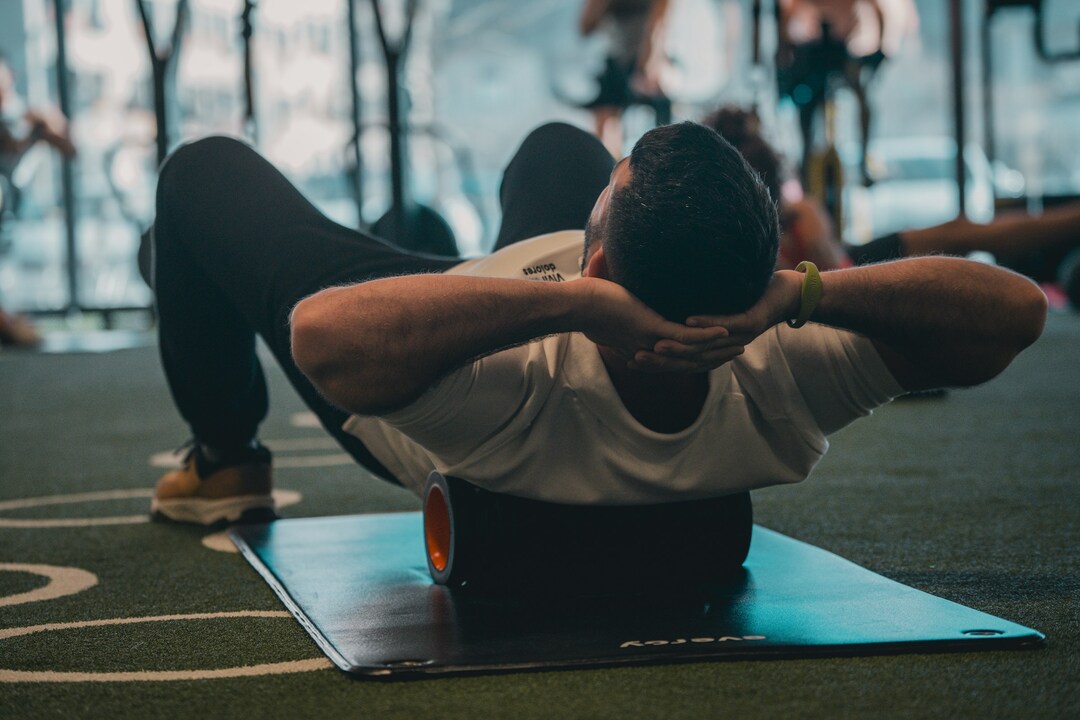12 Ways to Boost Your Workout Motivation

Boost your workout motivation with simple, practical tips that make staying consistent easier and help you feel more driven every day.
Most days, the hardest step is the first one; that tiny push decides if you show up or skip another session. Workout Quotes can snap your focus back to the goal, turning weak willpower into steady consistency. Want fundamental tools to build discipline, energy, and confidence so your training stays on track?
This guide provides practical, actionable strategies for goal setting, routines, accountability, recovery, and mindset to help you boost your workout motivation.
To help with that, the GetFit AI fitness app offers an easy-to-use platform that turns those ideas into a plan with simple coaching, habit tracking, and reminders, so you stay consistent and see real progress.
Summary
- Setting one specific, measurable target narrows decisions and boosts adherence, with Transparent Labs reporting that 75% of people who set specific fitness goals are more likely to achieve them.
- Making workouts social turns exercise into scheduled commitments rather than optional inspiration, and people who train with a partner are about 50% more likely to stick to their routine.
- The primary sustained payoff from regular exercise is psychological, not just physical, as 70% of people who exercise regularly report improved mental health.
- Matching workout formats to personality increases enjoyment and adherence, with a study by BPS Research Digest finding a 20% rise in enjoyment when sessions align with temperament.
- Practice that mirrors real-life movement produces better transfer and retention, echoing the finding that more than 80% of learners recommend practicing with real-world examples in related skills training.
- Generic plans often fail to meet the needs of many people, as evidenced by their impact on activity levels. According to Frontiers, less than a quarter of people meet the World Health Organization's activity recommendations, underscoring the need for tailored, low-friction systems rather than one-size-fits-all programs.
- This is where GetFit AI's AI fitness app fits in; it addresses personalization and scheduling gaps by adapting intensity and session timing, offering habit tracking and conversational coaching to help maintain consistency.
12 Ways to Boost Your Workout Motivation

Motivation can be broken down into two key elements: a clear, personal 'why' and simple systems that make the next workout obvious. Nail those two and start to become automatic, not moral tests.
1. Clarify Your Personal Motivation
Relying solely on external triggers, such as a vacation, to stay active isn’t sustainable. Connecting with your deeper reasons for exercising gives your efforts emotional meaning and strengthens commitment. When you know why fitness matters to you, whether it’s health, confidence, or stress relief, that purpose fuels your consistency.
2. Align with a Cause You Care About
Motivation spikes when workouts are tied to something meaningful beyond fitness itself. Whether it’s running for a charity, joining a community fitness challenge, or training for a cause-related event, this sense of mission adds passion and accountability to your routine.
3. Permit Yourself to Relax First
When feeling drained, stepping back briefly can paradoxically boost your drive. Research from the University of Buffalo shows that short rest periods, like watching one favorite TV episode before working out, increase your willpower to start exercising. This strategic pause restores mental energy without letting you slack off.
4. Pair Exercise with Entertainment You Love
Make your fitness time more enjoyable by incorporating something you enjoy doing simultaneously. Listening to a popular podcast or audiobook exclusively during workouts is a proven method called “temptation bundling.” According to studies at The Wharton School, this approach raises workout frequency by linking exercise to a pleasurable activity.
5. Follow the 3 x 10 Rule for Busy Days
Short on time? Breaking activity into three 10-minute sessions throughout the day can add up to a highly effective workout. Swap one walk for bodyweight exercises, such as squats or push-ups, to engage different muscle groups. These mini workouts quickly add to your weekly exercise total with manageable effort.
6. Use Post-it Notes for Positive Reminders
Placing sticky notes with uplifting fitness messages around your daily environment helps keep your goals at the forefront of your mind. Seeing these encouragements on your alarm clock, bathroom mirror, or workspace can spark motivation throughout the day and gently nudge you toward your workout, reinforcing a positive mindset.
7. Leverage Social Media for Support
Rather than just posting selfies, use social media platforms to join fitness communities or challenge groups. Studies have found that sharing progress and receiving encouragement online fosters accountability and boosts motivation. Being part of a group with shared goals can inspire consistency through friendly rivalry and mutual support.
8. Master Effective Self-Talk
Not all self-motivation phrases work equally well. Research shows speaking to yourself in the second person ("You can do this!") is more potent than first-person affirmations ("I can do this"). This style makes encouragement feel more like advice from a coach, boosting confidence and focus during challenging moments.
9. Introduce Friendly Competition
Adding a competitive element, such as tracking runs alongside friends or emulating celebrity workouts, can push you to exercise more. Data reveals that seeing peers or role models increase their activity often motivates you to match or exceed their effort, creating a positive feedback loop that fuels improvement.
10. Recall Your Fitness Successes
Revisiting past exercise achievements, such as a memorable high-energy workout you've conquered, strengthens your motivation. Studies indicate that recalling positive fitness memories boosts subsequent exercise levels by fostering positive emotions linked to working out, making you more likely to push through challenges.
11. Create the Perfect Workout Playlist
Music is a powerful tool for boosting exercise performance and enthusiasm. Choosing songs with tempos between 125 and 140 beats per minute, about the pace of energizing pop hits, can help maintain your focus and boost your mood. Research confirms that music at this tempo range improves endurance and overall workout motivation.
12. Keep Essential Equipment Ready at Home
Having basic workout gear, such as dumbbells, kettlebells, or a yoga mat, accessible at home removes barriers to exercising. Even short, high-intensity workouts using minimal equipment provide significant health benefits. Studies show that brief bouts of intense effort can yield the same benefits as longer cardio sessions, making it easier to fit exercise into busy days.
What's the simplest change that actually sticks?
Set one specific, measurable target and build everything around it. According to Transparent Labs, 75% of people who set specific fitness goals are more likely to achieve them. That single act narrows down decisions and directs energy toward measurable progress, rather than vague intentions. I coach athletes and everyday clients to pick one concrete target for 30 days, then iterate; the clarity shrinks friction and converts hesitation into a routine.
How do you use other people without handing them control?
Make social structure your scaffolding. When training becomes social, it stops being optional and becomes scheduled time, like a meeting you cannot miss. Transparent Labs, People who work out with a partner are 50% more likely to stick to their fitness routine, which explains why accountability partners have a greater impact on outcomes than motivational speeches. In practice, this means pairing a short, repeatable session with a friend once a week and treating it as a plan rather than just inspiration.
Why changing your why matters more than getting tougher
This challenge appears as men transition from courting-stage goals to family and career life: the old external drivers fall away, and the remaining motivators must be practical, such as maintaining energy for your kids or staying pain-free. Reframing exercises around the ability to play, work, and feel strong creates durable motivation, as it ties movement to daily life rather than distant aesthetics.
When should you back off instead of pushing through?
There is a rhythm to sustainable training, and recovery is a strategic tool, not an excuse. Short, intentional rest when you are depleted preserves consistency over months, and using small wins on low-energy days, such as ten minutes of focused work, mobility, or a brisk walk, keeps habit momentum without burning you out. Think of training as a bank account, not a single transaction; deposits matter more than dramatic, infrequent withdrawals.
What practical cues make starting easier?
Design tiny triggers that reduce decision load: a visible set of shoes by the door, a playlist queued only for workouts, or a two-minute prep ritual that signals the body. Make the first movement so easy you cannot say no. Over time, those cues become the automatic bridge between intention and action.
Most people rely on willpower because it feels familiar and free. That familiar approach works for short bursts, but as life fills with family, work, and obligations, willpower frays and workouts drop off. Solutions like GetFit AI provide athlete-authentic routines tailored to your schedule, personalization that adapts when life gets busy, and conversational support that acts like a coach in your pocket, helping you preserve progress without re-engineering your life.
A practical habit I ask clients to try: pick one observable metric for 30 days, train with a single partner, check each week, and use a micro-cue to start every session; the combination turns intention into repeatable behavior. It is simple and stubbornly effective because it treats motivation as a system, not as a fleeting inspiration.
Think about it this way: motivation without structure is like a spark in a rainstorm, brief and wet; structure without purpose is motion without meaning. The trick is to fuse both, so your workouts become an inevitable part of your day, not a heroic exception.
That looks settled, but the next question reveals why “what counts” as a workout changes everything about why we train.
What Are 'Workouts' And Why Do People Perform Them?

I treat workouts as purposeful practice, not random effort; they are repeatable systems that people use to solve everyday constraints, such as low energy, stress, and the need to improve measurably at movement. People perform them because movement gives reliable feedback, a sense of progress, and a repeatable place to convert intention into skill and identity.
What deeper needs do workouts actually meet?
This pattern appears across office workers, parents, and competitive athletes: the immediate payoff that keeps people coming back is psychological, not just physical. According to 70% of people who exercise regularly, improved mental health is a central benefit that sustains them, which explains why they tolerate discomfort and schedule workouts into busy weeks.
Why do so many people start with health and then keep going for other reasons?
Most people begin because health is concrete and socially legible, which explains why 75% of individuals cited health benefits as their primary motivation for working out. That starter motive is powerful for adoption. The shift from starter motive to steady habit usually follows when programs deliver quick, observable wins and a sense of mastery, at which point training stops being a project and becomes part of who you are.
How should programs be designed actually to fit into people’s lives?
Think in constraints: limited time, fluctuating stress, and competing priorities. If a routine ignores schedule friction, people drop it; if it demands complex choices every day, motivation erodes. Workouts that win are designed like apprenticeships, with progressive steps, clear micro-goals, and feedback loops that reward small wins. An apt analogy is learning a language, where short daily practice and timely correction are more effective than occasional marathon sessions for achieving long-term fluency.
Most people copy celebrity routines because they are inspiring and familiar, and that approach feels reasonable at first. But copying without adaptation creates mismatched loads, frustration, and avoidable plateaus. Platforms like AI fitness apps provide the missing bridge; they recreate authentic athlete routines while personalizing intensity and schedules, adapting when life interrupts, and including conversational support so the program changes with you rather than forcing you to change your life.
Ready to train like the legends and finally achieve the body you've always wanted? GetFit AI's AI fitness app lets you follow the exact workout routines that helped Arnold Schwarzenegger, Kobe Bryant, Cristiano Ronaldo, Serena Williams, and over 11 other elite athletes become champions, allowing you to chat with them for guidance and motivation. You can download the #1 rated app for free today to get fit for less than the cost of a single month's gym membership.
That feels like progress, but what actually determines whether you keep going is quieter and more personal than most people expect.
Related Reading
- Friday Workout Quotes
- Motivational Workout Quotes
How Does a Person's Personality Affect Their Workout Motivation?

Personality shapes what rewards you, what drains you, and which cues become automatic, so it directly alters both what motivates you to start and what keeps you coming back. In short, your temperament changes which workouts feel meaningful, which environments feel safe, and which small wins actually register as progress.
How do arousal and social preferences change what feels motivating?
This pattern appears across athletes and everyday trainees: people who crave stimulation are energized by loud, team-driven sessions, while those with lower arousal levels find the same scene exhausting. Matching the workout’s intensity, pace, and social density to those preferences matters because enjoyment is the short circuit to habit, according to the BPS Research Digest (2023). Participants who engaged in workouts that matched their personality reported a 20% increase in enjoyment, which explains why a slight tweak in format can significantly boost adherence overnight.
Why do some people turn consistency into a habit while others do not?
Think of discipline and decision load as separate engines. Conscientious people convert plans into rituals because they tolerate structure and follow small rules; people low in that trait need systems that remove choices. The real failure mode is not laziness; it is friction. When planning demands too many decisions, motivation burns on the altar of choice. That mismatch is widespread, and it helps explain why Frontiers (2025) reports that less than a quarter of people achieve the activity goals recommended by the World Health Organization, meaning that generic plans often fail to bridge personal constraints into sustained action.
What breaks motivation emotionally, and how do you prevent it?
This challenge appears consistently: anxiety, boredom, and frustration act like invisible tax collectors on every workout. When sessions produce repeated negative emotion, quitting follows, not because goals are bad, but because training becomes punishing. If stress reactivity is high, short, private, mastery-focused sessions can reduce that tax; if pride and social reward drive you, structured group progress can have the opposite effect. The fix is simple in theory, subtle in practice: match the emotional payoff to the personality so workouts stop feeling like chores and start feeling like a reliable win.
Most people follow familiar, one-size plans because they are easy to replicate and promise credibility, but this convenience creates hidden costs: fragmented motivation, early dropout, and wasted effort when the format clashes with individual temperament. Platforms like GetFit AI step into that gap; they recreate athlete-authentic routines while personalizing session intensity, duration, and social mode, and they add conversational coaching, allowing users to shift style mid-program without rebuilding everything, which reduces the friction that breaks good intentions.
Personality is not destiny; it is a tuning knob you can learn to set so your training fits you like a tool in hand, not a mandate on a wall.
That explanation feels tidy, but the real turning point, what actually makes someone keep showing up or quit quietly, turns out to be unexpectedly personal.
What Factors Influence Workout Motivation?

Motivation shifts with context: on some days, your brain craves novelty, while on others, it requires low friction and apparent progress. Treat motivation like a signal you can read and respond to, not a trait you must will into existence.
How does time of day and energy shape what you can do?
This pattern is observed across shift workers, parents, and office professionals: when decision fatigue is high, long, complex sessions lose their appeal, and short, targeted workouts become more appealing. Sleep, recent stress, and changes in blood sugar alter the kind of wins that register as meaningful, so the practical move is to match session type to current capacity, rather than forcing one style all week. Think of it as matching tools to tasks, rather than using a hammer for every screw.
What type of feedback actually keeps you showing up?
Immediate, objective feedback beats vague compliments for sustaining effort, especially early in a habit. Concrete metrics, such as a timed set, a rep target, or a percentage of an athlete-modeled load, create visible progress that you can chase session to session. Meanwhile, narrative rewards, like training a routine tied to a favorite athlete, convert admiration into action because the result feels authentic and earned. When feedback is delayed or inconsistent, motivation quietly erodes and training becomes theatrical rather than productive.
Why do social setups sometimes work and sometimes fail?
Most people use partners because they add accountability; however, success depends on the role the partner plays. Having a partner who shows up consistently and keeps sessions simple prevents the most common failure mode: turning workouts into negotiations. Having a training partner really moves the needle, as Garage Gym Reviews reports that 70% of people reported that having a workout partner significantly increases their motivation to exercise. However, pairings that demand matching pace or schedules often create friction. A more effective approach is a structured partnership with short-term commitments and clear roles. For example, one person times and the other records progress, so the relationship becomes a scaffolding rather than an extra problem to solve.
How important are goals, and which ones actually help?
Not all goals are equal; specificity makes the difference between a wish and a plan. Setting a target with a clear metric and deadline focuses behavior because you can measure attempts, not feelings, and that transforms effort into skill practice. That matters because, for many trainees, half the battle is knowing whether they have improved. This is why Garage Gym Reviews notes that 50% of respondents said setting specific fitness goals helps them stay motivated. The better approach is to set granular targets with short horizons, allowing for repeated feedback and avoiding the discouragement that comes from ambiguous progress.
When the usual approach breaks down, what’s the hidden cost?
Most athletes and fans emulate famous routines because they initially motivate them. That familiar approach is easy to start, but it becomes costly when schedules, fitness levels, or recovery needs diverge from the original program. The hidden cost is not failure, but wasted effort and frustration: you spend time doing something impressive, but poorly matched to your body and life, which accelerates dropout. Solutions like an AI fitness app that recreates athlete-authentic routines while adjusting intensity and timing maintain the inspirational draw but eliminate the mismatch risk, allowing users to preserve their identity and measurable gains without having to rebuild their life around a celebrity's schedule.
What role do small design choices play in everyday motivation?
Environment and micro-decisions add up. Music, playlists, minimal equipment, a visible cue, or a one-line checklist reduce resistance before motivation even arrives. These micro-designs are why some people continue training during busy seasons, while others stop; it is not grit, but relatively friction. A simple analogy: habits are like a train on tracks, and small environmental choices are the rails. If the rails lead to the gym, the train runs; if they stop short, motivation stalls.
A short anecdote to illustrate this point: when clients shift from an endless to-do mindset to one focused on a single, achievable target that can be completed in nine minutes, attendance becomes less heroic and more manageable, and that change often rebuilds confidence more quickly than increasing volume ever does.
That solution feels promising, but the more complex questions remain unsettled and more personal than most guides admit.
Related Reading
- Tuesday Workout Quotes
- Workout Quotes For Women
Tips and Tricks for Getting Started

Design the first few weeks so the next workout is obvious and small, not heroic. Start with brief, structured sessions that prioritize completion and gentle progressive overload, then add volume or intensity only after those sessions become routine.
How do I structure the first three weeks?
Begin with a weekday micro-plan: 10 to 20 minutes, five days a week. A simple sequence works: 3 minutes of brisk warmup, two compound movements (bodyweight squat, push-up variation) at 2 sets of 8 to 12 reps, one posterior-chain move (Romanian deadlift with light weight or good-morning bodyweight) for 2 sets of 10, and 3 minutes of mobility. Progress by adding 30 to 60 seconds per session or one extra rep per set each week. That small, measurable jump keeps fatigue low while forcing consistent adaptation.
What does “partner up” look like without adding friction?
Make the partnership transactional and minimal. Agree on one weekly shared session, a single objective for that session, and two firm roles: one person to time and logs, and the other to complete the coaching form. When we coached a 40-year-old preparing for a 23-mile ride, we used this model over six weeks, starting with two 10-mile rides, adding a 15-minute cadence drill, and scheduling one supportive check-in. The structure helped cut missed days and reduce saddle discomfort by pacing effort and incorporating periodic standing breaks. Keep commitments short so scheduling stays easy and the partner becomes scaffolding, not another obligation.
How should I vary workouts without losing momentum?
Rotate modes around effort and recovery, not personality. Use a three-day loop: a hard strength day, a moderate cardio or skill day, and a low-load recovery day. Swap modalities across weeks so the pattern repeats, but the stimulus changes; for example, strength, cycling, yoga, and repeat. Treat variation like seasoning, not a new recipe every day, so you avoid the burn of novelty and still recruit different muscle groups for broad fitness.
How do I set goals that actually protect consistency?
Pick one process metric for 30 days, then one performance metric for the next 30. Process example: complete five workouts per week. Performance example: add 5 pounds to your squat or hold a plank 10 seconds longer. Track those daily in a simple checklist and review weekly. This keeps attention on repeatable behavior at first, then shifts to measurable capacity, preventing the emotional whipsaw of “did I do enough?”
What do you do about cravings, schedule derailment, or dietary constraints?
When late-night cravings strike, replace the compulsive choice with a pre-approved substitution plan: a protein-rich snack, a short walk, or a 7-minute mobility routine that breaks the automatic loop. For vegetarian trainees struggling to get enough protein within their budget, prioritize high-protein legumes, paneer, or tofu portions timed around workouts, and consider low-cost protein powders for recovery days. These small rules reduce decision fatigue and protect training progress without demanding perfection.
How do you plan recovery so it becomes strategic rather than optional?
Treat recovery as a non-negotiable session type. Schedule two deliberate recovery windows each week: one active recovery day, consisting of 20 to 30 minutes of low-intensity movement, and one longer sleep-focused night with a wind-down routine. Use simple metrics, such as resting heart rate or sleep hours, to adjust intensity the next day. If RHR increases by more than 5 beats from baseline or sleep drops below 6 hours, switch a planned hard session to technique work or mobility.
Most people copy free videos or random celebrity routines because they are inspiring and easily accessible. That familiar approach works at first, but as load and life complexity increase, mismatches emerge: workouts become too long, recovery is ignored, and progress stalls. Platforms like GetFit AI recreate athlete-authentic routines while automatically scaling intensity, scheduling recovery, and offering conversational guidance, so the inspirational program becomes a practical, personalized roadmap instead of an aspirational checklist.
How should I document and audit progress so the plan actually improves?
Write a one-line post-session note: what you did, how you felt on a 1–10 scale, and one objective metric like reps, distance, or load. Review those notes every two weeks and ask one question: Did I improve an objective metric or reduce perceived effort? If not, change only one variable for the next two weeks. This tiny audit loop prevents plan creep and turns effort into actionable data. Given that many learners rely on structured programs, it makes sense to utilize reliable resources. According to the DataCamp Blog, approximately 50% of learners use online courses as their primary resource. Therefore, pairing a short written audit with a guided online plan compounds effectiveness.
How do I practice the skills that transfer to real life rather than just chasing numbers?
Focus sessions on movements and contexts you will encounter, such as repeated standing for cyclists, loaded carries for parents who lift their kids, and explosive decelerations for court sports. Practicing with real, specific scenarios beats abstract drills because it produces usable strength and confidence. That approach parallels learning-by-doing in other fields, where hands-on practice is crucial. In fact, the DataCamp Blog reports that more than 80% of students recommend practicing with real-world datasets, and the lesson translates directly to fitness, as it involves practicing with the movements you actually need.
Think of the first months as calibration, not commitment. Small, measurable sessions are the tuning stage that lets you add real load later without breaking.
That change helps a lot, but something unexpected usually shows up that forces you to rethink who should lead your training next.
Make Your Favorite Athlete Your Fitness Trainer | Try GetFit AI's AI Trainer App for Free Today
I know you want a healthier body, inspired by elite athletes, but shaped to your life, and that motivation fades quickly without structured, proven routines that keep you moving. Solutions like GetFit AI close that gap, with users reporting a 30% increase in workout efficiency with GetFit AI, and 90% of users reported improved fitness levels within 3 months, so if you want a coach-like plan that adapts to your schedule and keeps momentum, consider giving it a try.
Related Reading
- Morning Workout Quotes
- Inspirational Workout Quotes



.png)
.png)











